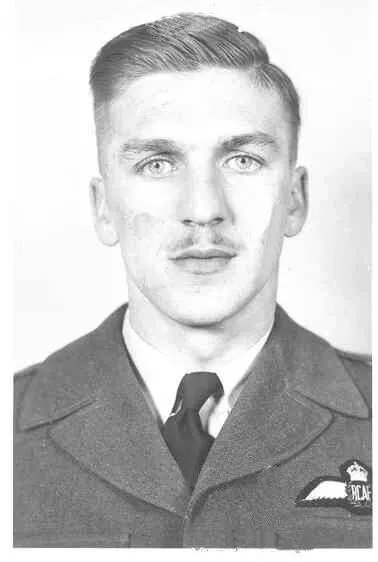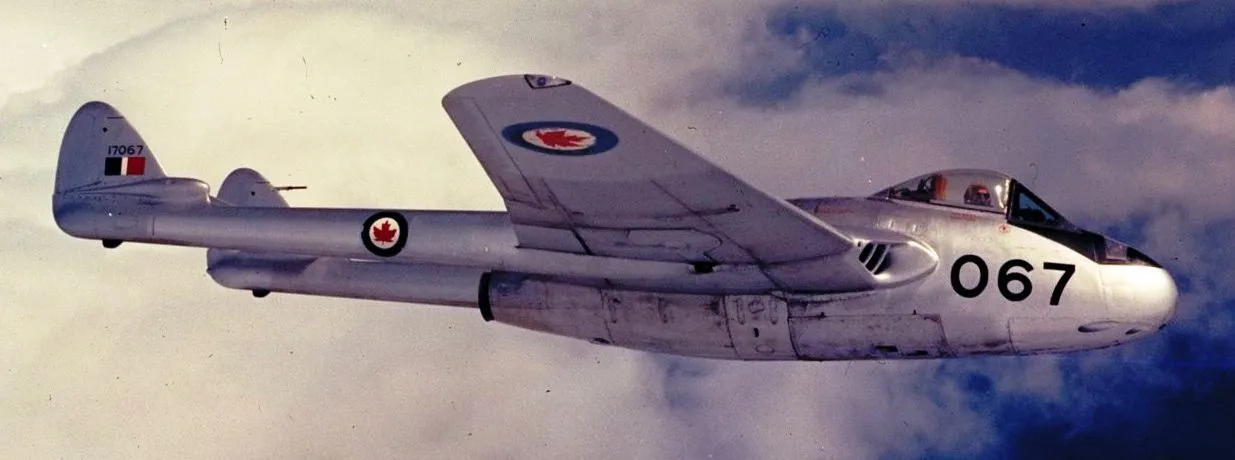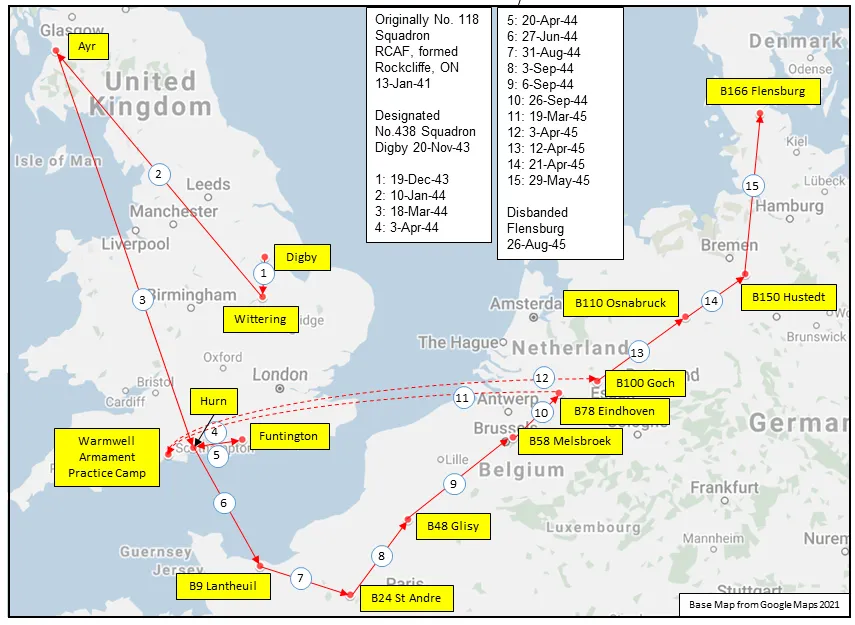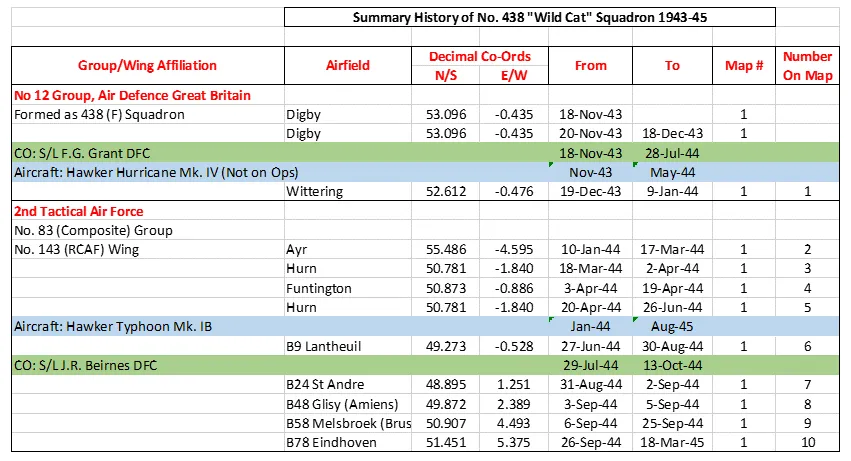Marshall, Gerald Phillip John
Killed in Flying Accident 1955-11-06


Birth Date: 1928-August-07
Born: Verdun, Quebec
Son of Stanley Edmunds and Helen Mary Marshall of St. Eustache sur le lac, Qubec.
Home: Verdun, Quebec
Enlistment: Montreal, Quebec
Enlistment Date: 1951-11-06
Service
RCAF
Unit
438 Sqn- Squadron
Going Down
Base
Rank
Flying Officer
Position
Flying Officer
Service Numbers
200231
Home
 Verdun, Quebec
Verdun, Quebec
First Burial
 Mount Royal Cemetery, Montreal, Quebec, Canada
Mount Royal Cemetery, Montreal, Quebec, Canada
de Havilland Vampire

de Havilland DH.100 Vampire, RCAF (Serial No. 17067), No. 411 "County of York" Squadron (Auxiliary), Toronto, Ontario
The de Havilland Vampire is a British jet fighter which was developed and manufactured by the de Havilland Aircraft Company. It was the second jet fighter to be operated by the RAF, after the Gloster Meteor, and the first to be powered by a single jet engine.
Development of the Vampire as an experimental aircraft began in 1941 during the Second World War, to exploit the revolutionary innovation of jet propulsion. From the company's design studies, it was decided to use a single-engine, twin-boom aircraft, powered by the Halford H.1 turbojet (later produced as the "Goblin"). Aside from its propulsion system and twin-boom configuration, it was a relatively conventional aircraft. In May 1944 it was decided to produce the aircraft as an interceptor for the Royal Air Force (RAF). In 1946 the Vampire entered operational service with the RAF, only months after the war had ended.
The Vampire quickly proved to be effective and was adopted as a replacement of wartime piston-engined fighter aircraft. During its early service it accomplished several aviation firsts and achieved various records, such as being the first jet aircraft to cross the Atlantic Ocean. The Vampire remained in front-line RAF service until 1953 when it was progressively reassigned to various secondary roles, such as ground attack and pilot training, for which specialist variants were produced. The RAF retired the Vampire in 1966 when its final role of advanced trainer was filled by the Folland Gnat. The Royal Navy had also adapted the type as the Sea Vampire, a navalised variant suitable for operations from aircraft carriers. It was the service's first jet fighter.
The Vampire was exported to a wide variety of nations and was operated worldwide in numerous theatres and climates. Several countries deployed the type in combat during conflicts, including the Suez Crisis, the Malayan Emergency, and the Rhodesian Bush War. By the end of production, almost 3,300 Vampires had been manufactured, a quarter of these having been manufactured under licence in several other countries.
The layout of the DH.100 used a single jet engine installed in an egg-shaped fuselage which was primarily composed of plywood for the forward section and aluminium throughout the aft section. It was furnished with conventional mid-mounted straight wings; air brakes were installed on the wings to slow the aircraft, a feature that had also been incorporated in the Meteor. Armament comprised four 20 mm Hispano Mk V cannon located underneath the nose; from the onset of the design phase, even when the aircraft was officially intended to serve only as an experimental aircraft, the provision for the cannon armament had been included.
In 1946, a single Vampire F.1 began operating on an evaluation basis in Canada at the Winter Experimental Establishment in Edmonton. The Vampire F.3 was selected as one of two types of operational fighters for the Royal Canadian Air Force (RCAF) and was first flown in Canada on 17 January 1948 where it went into service as a Central Flying School training aircraft at RCAF Station Trenton. Operating a total of 86 aircraft, the Vampire F.3 became the first jet fighter to enter RCAF service in any significant numbers.
The Vampire had the function of introducing Canadian fighter pilots not only to jet propulsion, but also to other amenities such as cockpit pressurisation and the tricycle landing gear arrangement. It proved to be a popular aircraft, being easy to fly and often considered a "hot rod". In Canadian service, the Vampire served in both operational and air reserve units (400, 401, 402, 411, 438 and 442 squadrons). During the late 1950s, the type was retired and was replaced in RCAF service by the Canadair Sabre.Wikipedia
After retirement, 26 of the surplus RCAF Vampires were sold to the Formetal Division of Fliteways Inc., West Bend, Wisconsin, USA in 1958. Another 4 airframes were to provide spares. Aerial Blight Control, also of West Bend, refurbished 15 Vampires for sale to the Mexican Air Force starting in 1959. The FAM operated the Vampires until about 1970. Several of the remaining Vampires purchased by Fliteways found their way to the US civil market. Some may now be found in museums in Mexico, the U.S. or Canada.
 Wikipedia de Havilland Vampire
Wikipedia de Havilland Vampire
 de Havilland Vampire - Kestrel Publications
de Havilland Vampire - Kestrel Publications
438 Sqn Going Down ("Wild Cat")
History of the Squadron before and during World War II (Aircraft: Hurricane IV, Typhoon IB)

438 Squadron had its roots dating back to September 1934, when it was created in the auxiliaries in Montreal, Quebec as 18 (Bomber) Squadron, at the behest of local francophone World War I veterans and influential members of the local business community and was the first RCAF francophone squadron. Renumbered 118 Squadron on 15 November 1937, its reservists were activated for full time war service on 3 September 1939. The unit’s role changed to Coastal Artillery Co-operation on 28 October and it moved to St John, New Brunswick , where it was equipped with Armstrong Whitworth Atlas and Westland Lysander aircraft. 118 Squadron was re-designated a fighter unit on 8 August 1940 and was disbanded on 27 September 1940. The squadron was re-formed at Rockcliffe, Ontario in December 1940-January 1941 and was equipped with Grumman Goblin Aircraft. It moved to Dartmouth, Nova Scotia in July 1941. In November, it re-equipped with Curtiss Kittyhawk aircraft, and in June 1942 transferred to Annette Island, Alaska , as part of the Canadian reinforcement of the US Army Air Force on the west coast. It was selected as one of the six home fighter squadrons to be sent overseas in October 1943.
It was the first of the six home squadrons to be transferred overseas without its aircraft, and was re-designated No. 438 (FB) Squadron RCAF at Digby, Lincolnshire, England on November 18, 1943. It flew Typhoon aircraft in the preparation for D-Day and afterwards gave close support to the ground troops by dive-bombing and strafing enemy strongpoints, bridges, and road and rail traffic. The squadron moved with the ground troops through France, the Low Countries, and Germany. It was disbanded at Flensburg, Germany on August 23, 1945.
In the course of operations, the squadron flew 4022 sorties for the loss of 28 aircraft and 31 pilots, of whom 17 were killed, 5 missing, and 6 POWs. They dropped2070 tons of bombs and accounted for a large number of rail and road vehicles. The squadron amassed 5 DFCs. Battle Honours were: Fortress Europe 1944, France and Germany 1944-45, Normandy 1944, Arnhem, Rhine.Wikipedia, Kostenuk and Griffin
Maps for Movements of 438 Squadron 1943-45
 MAP 1: 438 Squadron Movements 1943-45 (right-click on image to display enlarged in new tab) |
438 Squadron History Summary 1943-45

438 Squadron History Summary 1943-45 Page 2

History of the Squadron Post-WWII (Aircraft: Harvard, Vampire III, Silver Star, Sabre 5, Expeditor, Otter, Kiowa, Griffon)
The squadron was re-formed at St. Hubert, Quebec on 15 April 1946, flying de Havilland Vampires and Canadair Sabres, becoming 438 "City of Montreal" Squadron. With unification, it took on the role of an Air Reserve Squadron based at Canadian Forces Base Montreal flying the CC-123 de Havilland Otter and CH-136 Kiowa helicopter. In January 1996, the Kiowas were retired from service and that April the Squadron took delivery of its first CH-146 Griffon. The squadron simultaneously absorbed 401 (Kiowa OTU) Squadron and 1 Tactical Aviation Support Squadron with many Regular Force members. The arrival of the Aviation Tactics Flight in 2015 gave 438 Squadron its current dynamic mixed composition. 438 Squadron also proudly boasts a full 35 piece professional Air Reserve military band. Their reserve status notwithstanding, the members of the 438 Squadron Band are all professional musicians with many possessing remarkable academic achievements in their field.438 Tactical Helicopter Squadron is located at Saint-Hubert, Quebec. With a typical staffing level of 50 percent reservists and 50 percent Regular Force members, 438 Squadron typifies the Total Force concept. Equipped with CH-146 Griffons, 438 Squadron’s tasks include armed and unarmed tactical utility transport, training tactical helicopter aircrew personnel in basic and advanced aviation tactics, technical training of CH-146 ground crew personnel and flight engineers, and the periodic maintenance of CH-146 fleet aircraft. They also include as residual capabilities search and rescue, reconnaissance, and support to federal, provincial and local law enforcement agencies.
 Canadian Virtual War Memorial
Canadian Virtual War Memorial Harold A Skaarup Web Page
Harold A Skaarup Web Page YouTube de Havilland Vampire
YouTube de Havilland Vampire